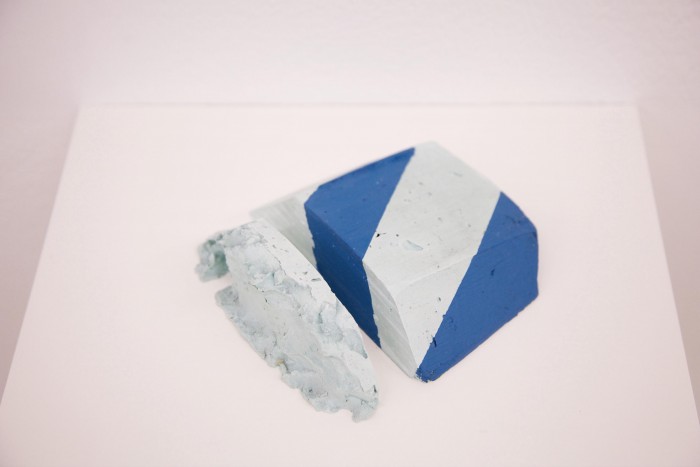
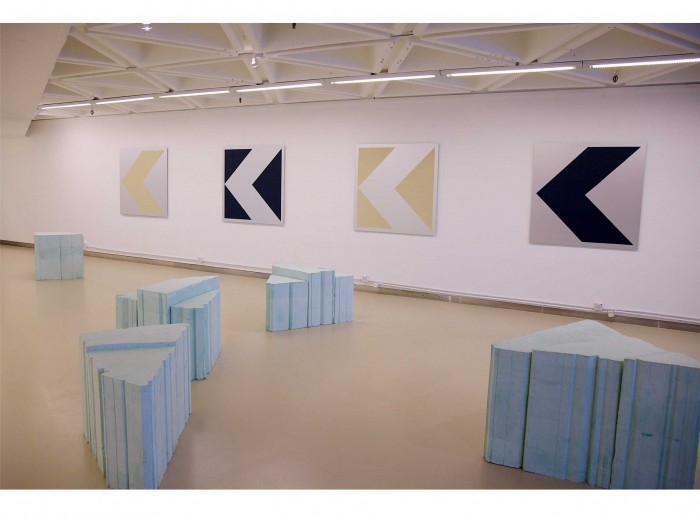
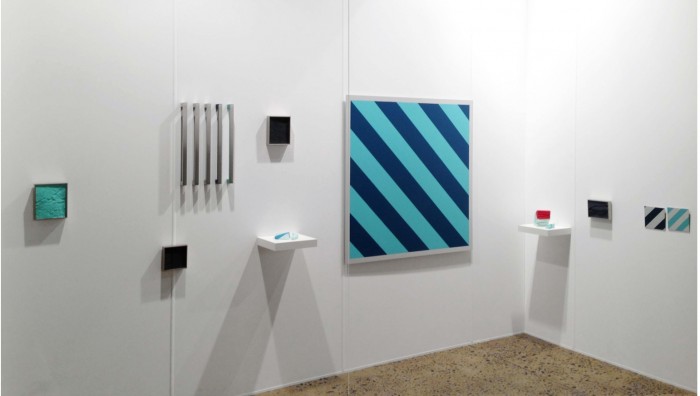
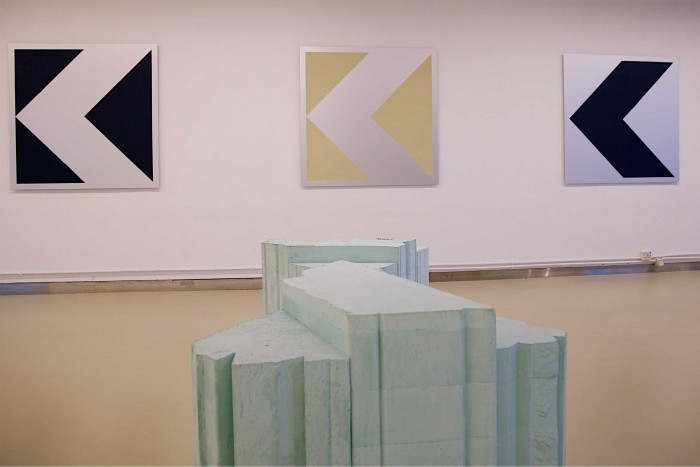
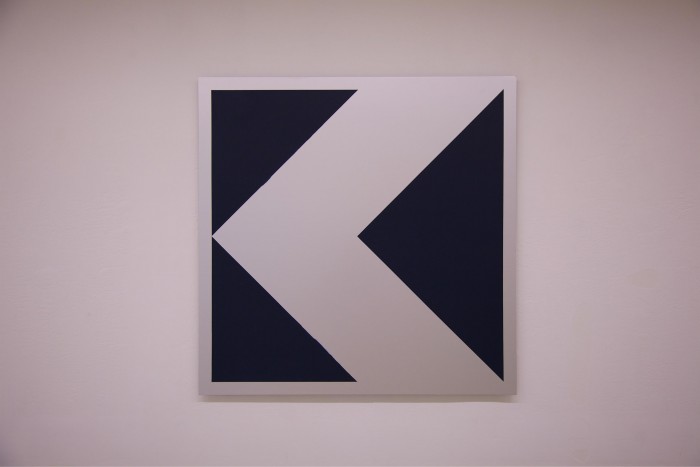
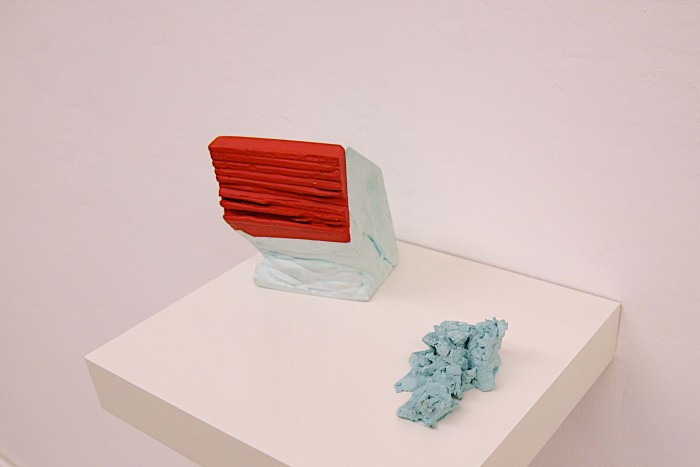
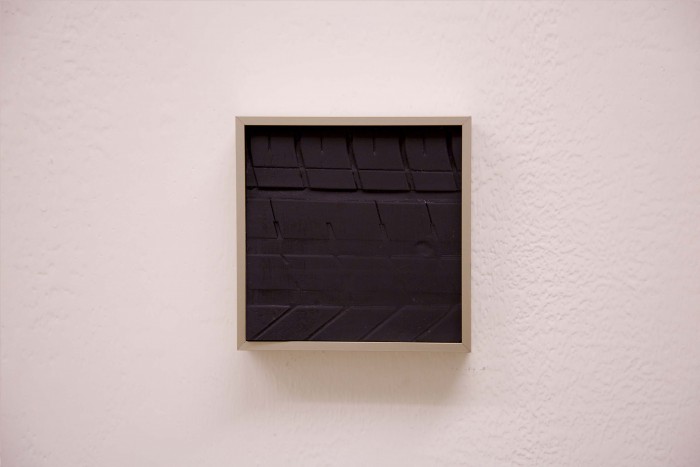
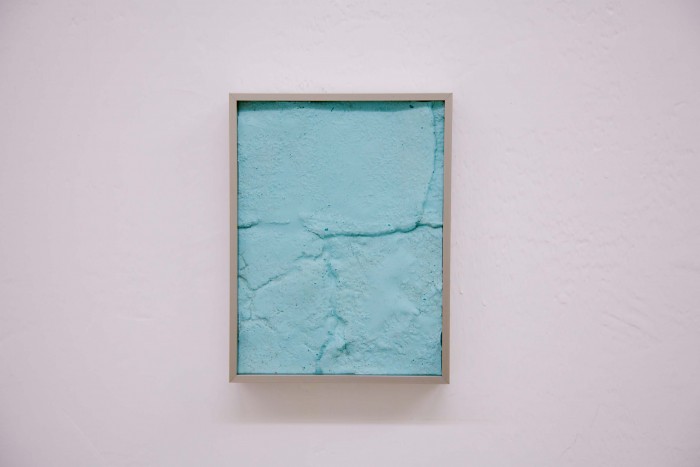
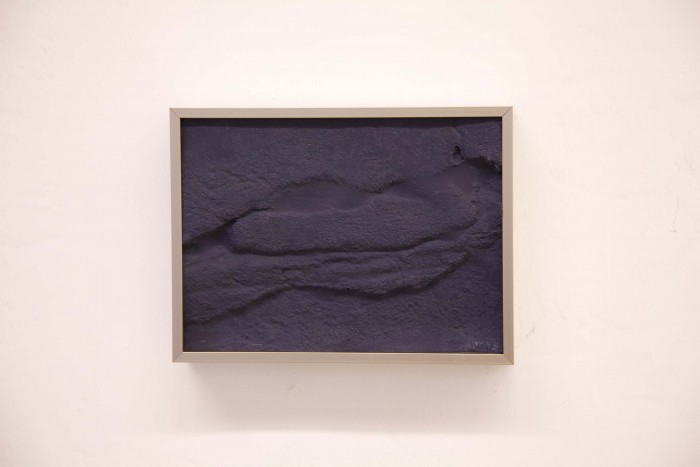
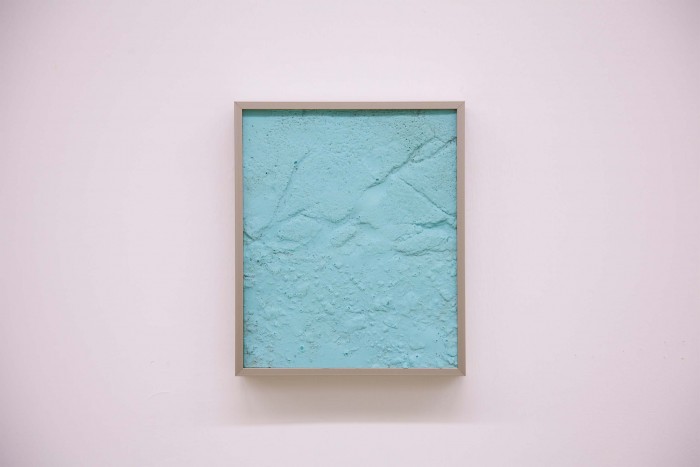
( from the exhibition handout)
Objects Encrypted provides a survey of uninhabited spaces, such as back-alleys and parking lots, which are found in highly dense urban spaces, such as Hong Kong, Paiva’s home since 2006. The body of work exhibited builds and develops on Paiva’s core systematic process of documenting, analysing, abstracting and reducing what he sees around him to create a codified interpretation that is simultaneously an artwork.
The process behind Paiva’s new body of work exhibited in Objects Encrypted is one of research, observation and collection: he surveys where obscure annexes are located in Hong Kong; looks closely at these spaces, observing in particular their signage, textures as well as their materials of construction; then collects these various intrinsic structural qualities.
What has been produced is a series of works that transplants the mundane and fuses the aesthetics of the street - not the bustling spaces one usually associates Hong Kong with - but rather those more secretive and annexed parts. Indeed, Paiva presents the key visual characteristics of areas that we might otherwise have never looked at and quite possibly forgotten: empty space in Hong Kong is never long-lasting, rentability being prioritised over abandon.
Paiva’s interest in the architecturally ordinary is not a superficial survey though; rather, it is a very focused investigation into the core constituents that make up this dense metropolis’ alter-areas. Indeed, Paiva takes a nearly geological interest in the range of aleatory construction alloys used, finely dissecting their intricate designs and inherent decay.
The result is a well-informed and detailed extrapolation rather than a mere general impression of these sites. For example, in the series Archetypes for Tar and Concrete, Paiva wandered through back-alleys and parking lots looking for interesting textures to cast. The product is a series of wall pieces, made of encrypted silicone, placed alongside aluminum structures that are arranged according to the semi-random arrangement of posters, signage, pipes and metal structures found in these under-looked places of the city.
There is, however, a further angle to Paiva’s work; by bringing these artworks into the Goethe Institut Hong Kong he investigates what happens when you transplant the ruffian into a clean, bright and hermetic space: a place that is not uninhabited, out of people’s tracks, but rather a purposeful destination for observation. The transplant and its consequences cannot be ignored: the objects seem out of place, there is a breakdown of barriers between the outside and the in and there is a mounting tension between the solely functional components and the crafted interior design. This body of work therefore goes beyond the process of collecting and creating, and addresses the antagonism of locations.